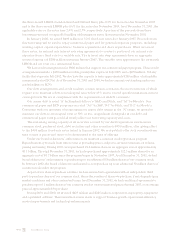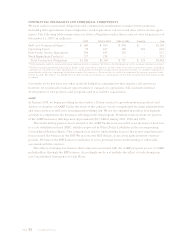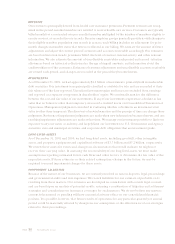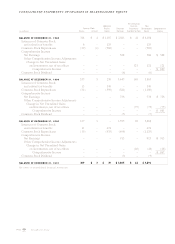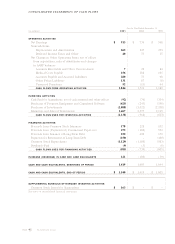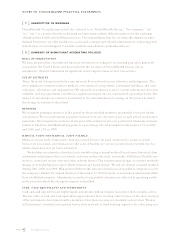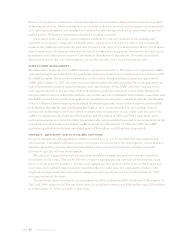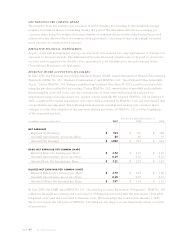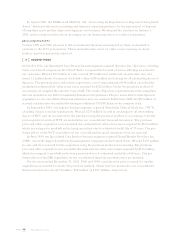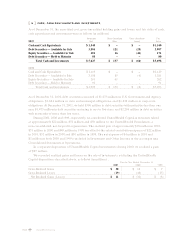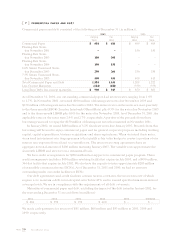United Healthcare 2001 Annual Report Download - page 43
Download and view the complete annual report
Please find page 43 of the 2001 United Healthcare annual report below. You can navigate through the pages in the report by either clicking on the pages listed below, or by using the keyword search tool below to find specific information within the annual report.
PAGE 42 UnitedHealth Group
[1]DESCRIPTI ON OF BUSINESS
UnitedHealth Group Incorporated (also referred to as “UnitedHealth Group,” “the company,” “we,”
“us,” “our”) is a national leader in forming and operating orderly, efficient markets for the exchange
of high quality health and well-being services. Through independent but strategically aligned, market-
defined businesses, we offer health care access and coverage and related administrative, technology and
information services designed to enable, facilitate and advance optimal health care.
[2]SUM MARY OF SIGNIFICANT ACCOUNTING POLICIES
BASIS OF PRESENTATION
We have prepared the consolidated financial statements according to accounting principles generally
accepted in the United States and have included the accounts of UnitedHealth Group and its
subsidiaries. We have eliminated all significant intercompany balances and transactions.
USE OF ESTIMATES
These financial statements include some amounts that are based on our estimates and judgments. The
most significant estimates relate to medical costs, medical costs payable, contingent liabilities, and asset
valuations, allowances and impairments. We adjust these estimates as more current information becomes
available, and any adjustment could have a significant impact on our consolidated operating results. The
impact of any changes in estimates is included in the determination of earnings in the period in which
the change in estimate is identified.
REVENUES
We recognize premium revenues in the period in which enrolled members are entitled to receive health
care services. We record premium payments received from our customers prior to such period as unearned
premiums. We recognize fee revenues in the period the related services are performed. Premium revenues
related to Medicare and Medicaid programs as a percentage of total premium revenues were 17% in 2001
and 2000, and 21% in 1999.
MEDICAL COSTS AND MEDICAL COSTS PAYABLE
Medical costs include claims paid, claims processed but not yet paid, estimates for claims received
but not yet processed, and estimates for the costs of health care services people have received, but for
which claims have not yet been submitted.
We develop our estimates of medical costs payable using actuarial methods based upon historical claim
submission and payment data, cost trends, customer and product mix, seasonality, utilization of health care
services, contracted service rates and other relevant factors. The estimates may change as actuarial methods
change or as underlying facts upon which estimates are based change. We did not change actuarial methods
during 2001, 2000 and 1999. Management believes the amount of medical costs payable is adequate to cover
the company’s liability for unpaid claims as of December 31, 2001; however, actual claim payments may differ
from established estimates. Adjustments to medical costs payable estimates are reflected in operating results
in the period in which the change in estimate is identified.
CASH, CASH EQUIVALENTS AND INVESTMENTS
Cash and cash equivalents are highly liquid investments with an original maturity of three months or less.
The fair value of cash and cash equivalents approximates their carrying value because of the short maturity
of the instruments. Investments with a maturity of less than one year are classified as short-term. We may
sell investments classified as long-term before their maturity to fund working capital or for other purposes.
NOTES TO CONSOLIDATED FINANCIAL STATEMENTS


